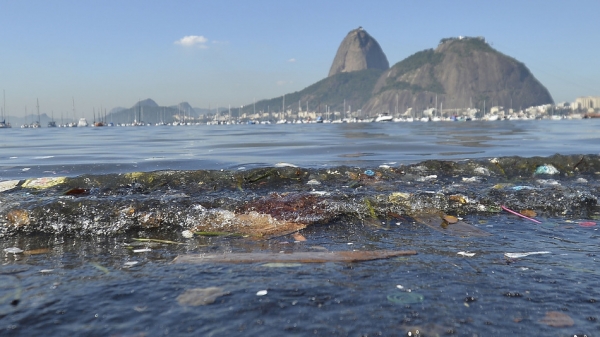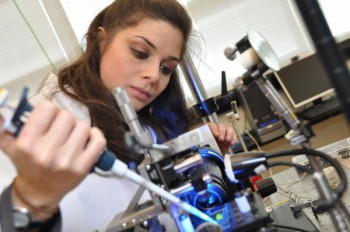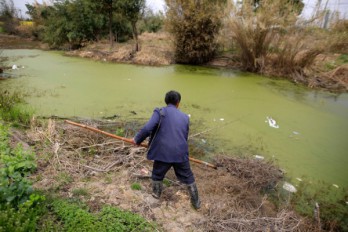Polluted waters in Rio: Rowers, sailors and swimmers are concerned about their health

They have been advised to keep their mouth closed at all times to avoid catching serious illnesses from the water
They have been advised to keep their mouth closed at all times to avoid catching serious illnesses from the water
We are only a few days before the opening ceremony of the Olympic Games in Rio, but unfortunately the severe pollution of the waters in Copacabana Bay (where marathon swimming and triathlon competitions will take place) and Guanabara Bay (where windsurfing and sailing events will be hosted) remains. Actually, they are much more contaminated than previously thought, according to environmentalists and scientists. Rio's waters were found to contain viruses up to 1.7 million times more hazardous than a typical beach in the U.S., due to raw sewage that still flows from poor neighborhoods right into the water. Apart from sewage, there is also the visual pollution of tons of trash floating in the bay.
Athletes have been strategizing to protect themselves: some have arrived in Rio in advance trying to build up immunity to possible diseases, while others plan to avoid the water until just before competition, hoping that the possible symptoms won’t appear until after the Games are over (the incubation period for viruses can last up to 10 days).The US Olympic Rowing Team will be equipped with a newly-developed unisuit with an “antimicrobial finish”, released by the company Boathouse Sports and designed by textile engineer Mark Sunderland at Philadelphia University. He wove synthetic fibers into seamless garments that wick away moisture from the athlete’s skin, a basic layer of protection against bacteria and enteric viruses which can enter through the skin and open wounds. The unisuit is also environmentally friendly, as the manufacturing process for each suit produces less than a gram of waste. However, although the suits do have a chemical-based antimicrobial finish as a second layer of protection, a rower could still be exposed to bacteria through parts of their bodies not covered by the rowing apparel. Moreover, as oars hit the water, virus-filled water droplets aerosolize and can be inhaled by heavily-breathing rowers. “They would basically have to put a mask over their face,” says Valerie Harwood, a water quality microbiologist at the University of South Florida.
But even health experts aren’t sure antimicrobial gear will do much to protect water athletes from nasty viruses and bacteria. “They will literally be immersing themselves in very high levels of pathogens,” says Katherine Mena, who researches waterborne pathogens at the UT-Houston School of Public Health and was one of the water quality experts who helped analyze data collected by the AP during its investigation of Rio’s waters. Hopefully, Olympians will be able to fend off most of the viral and bacterial infections their bodies encounter, as they have some of the best immune systems in the world. “These are organisms that they are exposed to everyday,” says Mena. But, she adds, not where exposure is so high.
Scientists that had been documenting Rio's vast water pollution problem the last years hoped that the Olympics would force the city to clean it up. But in the last seven years, there was only small progress in this direction. Oceanographer David Zee said the Brazilian government promised to install eight treatment plants in Rio's polluted rivers, but built just one instead. They promised to treat 80 percent of the sewage flowing into Guanabara Bay, and are only treating about half. Zee said if he had to grade the job the government has done cleaning up the water, he would give them a D. "The water continues in the bad shape," he said. On the other hand, Guido Gelli with Rio's Environmental Department said it's easy to criticize. "The problem is the sewage systems, because it's not easy, it's very expensive," he said. "And for Olympic Games there's no problem with the surface of the bay in the place where the games will be."
All in all, this August 1,400 rowers, canoers and marathon and triathlon swimmers will risk infection when competing in the dangerous waters. "It won't take us out of wanting to compete, but there is that level of stress created. I put all this time in and something I cannot control might take me off my game," Meghan O'Leary, the U.S. rowing competitor said. "It's easy for people to say [we] should just throw their hands up and not compete, but the reality is that if we do that, there's 50 people on line behind us who will take our spot," said the U.S. sailor Helena Scutt.
Want to read more like this story?

March 22nd is World Water Day!
Mar, 22, 2015 | NewsSince 1993, the United Nations has designated March 22nd of each year as World Water Day, a day dedi...

Researchers have developed a miniaturized water quality sensor that can monitor drinking water quality in real time
Oct, 03, 2017 | NewsThis tiny and inexpensive device -built using a 3D printer- can be deployed anywhere in the water di...

Ancient engineering methods to address water shortages
Jul, 31, 2019 | NewsAccording to a new study, published in Nature Journal, a 1,400-year-old system of canals that divert...

More than 80% of underground water in China is heavily polluted
Apr, 12, 2017 | NewsIndustrial pollution and farming has rendered it unsuitable for human use Industrial pollution an...

Thames Water Accelerates Plans to Secure South East's Future Water Supply
Jun, 07, 2024 | NewsToday marks a significant step in securing the future water supply for the South East as Thames Wat...

SuntoWater generators produce 150-400L of potable water per day out of thin air
Mar, 06, 2017 | NewsThey can be powered by solar or solar plus grid power They can be powered by solar or solar plus...

Next generation reverse osmosis water purifier
Nov, 16, 2016 | NewsWaterO brings highly-filtered drinkable water to the kitchen table WaterO brings highly-filtered...

Water scarcity: Cape Town is running dry
Feb, 20, 2018 | News‘Day Zero’ approaches, when the city’s water taps will be turned off in Mid-May â...

This powder offers an innovative solution to water purification
Aug, 11, 2017 | NewsA small Japanese company has developed a special powder that could improve water quality in developi...
Trending

Vertical gardens in Mexico City to combat pollution

Characteristics of Load Bearing Masonry Construction

Taipei 101’s impressive tuned mass damper

Saudi Park Closed After 360 Big Pendulum Ride Crashes to Ground, 23 injured

Dutch greenhouses have revolutionized modern farming

Federal court rules Biden’s offshore drilling ban unlawful


